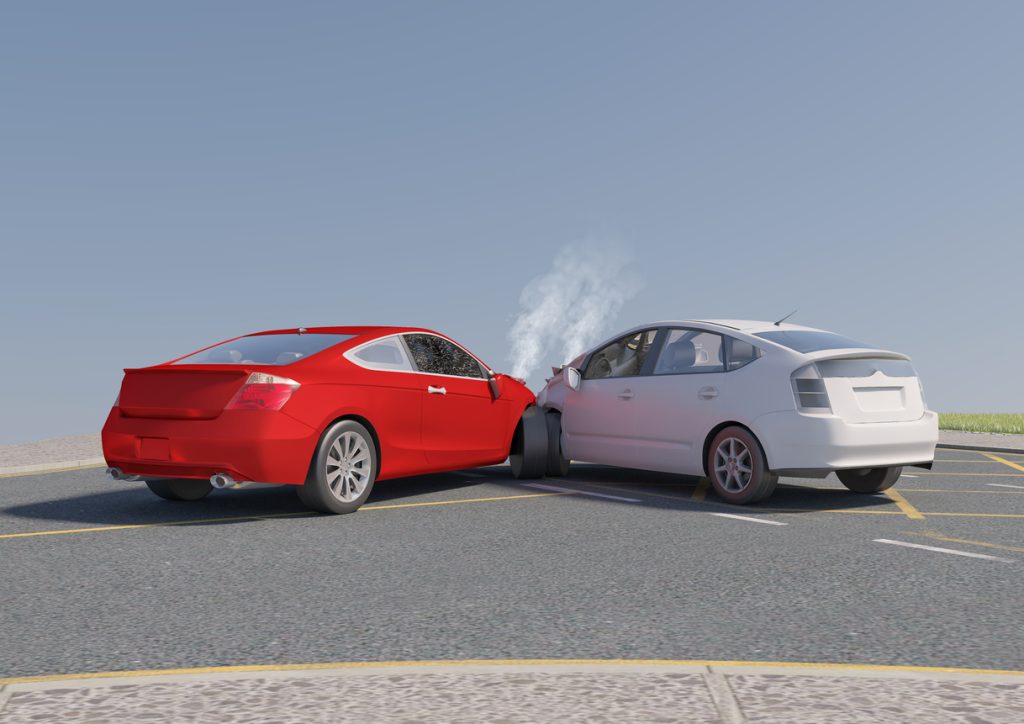Autumn’s beauty can quickly mask hidden dangers on the road. One of the most underestimated Fall Driving Hazards involves rain-soaked leaves creating slippery surfaces that challenge even the most careful motorists. While many drivers associate hazardous road conditions with ice or snow, wet leaves can reduce tire traction almost as severely, leading to longer stopping distances, increased skidding risks, and a greater potential for collisions. Understanding how these seasonal conditions affect braking, and how to respond, is critical for road safety.
The Hidden Danger of Rain-Soaked Leaves
When leaves cover the pavement, they may look harmless, even picturesque. However, after rainfall, those same leaves become slick, forming a thin layer that acts almost like ice beneath vehicle tires. This layer reduces the friction between the rubber and the road, making it harder to stop or control the vehicle. In many ways, this makes rain-soaked leaves one of the most underestimated Fall Driving Hazards, as the threat is often invisible until it is too late.
In addition, leaves can conceal other dangers such as potholes, painted road markings, or uneven pavement. This combination of reduced traction and obscured hazards amplifies the risk for drivers who do not adjust their speed and braking habits accordingly.
Why Braking Is Riskier in Wet Leaf Conditions
Safe braking relies on adequate traction. When leaves become saturated, they create a slick barrier that prevents tires from gripping the road surface. The result is longer stopping distances and a heightened risk of losing control during sudden stops. The science behind this is similar to hydroplaning, where a layer of water prevents direct tire-to-road contact. In the case of wet leaves, the organic material traps moisture and natural oils, intensifying the slipperiness.
Drivers accustomed to stopping quickly on dry roads may find that their braking distances double or even triple under these conditions. This makes rain-soaked leaves a uniquely deceptive contributor to Fall Driving Hazards.

Legal Implications of Accidents in Leaf-Covered Road Conditions
Collisions caused by slippery autumn roads can have significant legal consequences. While weather conditions may be a factor, drivers are generally expected to adjust their behavior to the road’s condition. Failure to reduce speed, maintain a safe following distance, or brake appropriately on wet leaves could be considered negligent driving. In many jurisdictions, this negligence can impact liability determinations in traffic accident claims.
In some cases, municipalities or property owners could share liability if poor road maintenance, inadequate drainage, or failure to clear excessive leaves contributed to unsafe conditions. This legal complexity makes understanding the hazards essential not only for safety but also for protecting legal rights.
How Wet Leaves Impact Vehicle Braking Systems
Braking systems function most effectively when tires have a solid grip on the pavement. In wet leaf conditions, anti-lock braking systems (ABS) may still engage, but their effectiveness can be reduced because the tire’s point of contact with the road is compromised. Even advanced driver assistance systems rely on physical traction, so no technology can fully eliminate the danger of rain-soaked leaves.
Drivers who apply brakes too aggressively may trigger a skid, particularly on curves or inclines. This is why defensive driving strategies are crucial when encountering this type of Fall Driving Hazards.
Adjusting Driving Habits to Reduce Risk
Mitigating the dangers of wet leaves requires intentional changes in driving behavior. Reducing speed is essential to maintain control, especially on rural roads, shaded streets, or areas where leaf accumulation is likely. Increasing the following distance between vehicles allows more time to brake without losing control.
Gentle braking is preferable to sudden stops, and downshifting in manual vehicles can help slow speed without over-relying on brakes. When navigating turns, avoiding sudden steering adjustments can help maintain traction.
One important precaution is to anticipate areas where wet leaves may be present — such as tree-lined streets or low-lying areas. This forward-thinking approach reduces the likelihood of being caught off guard by these slippery conditions.

Seasonal Weather Compounding the Danger
Autumn weather often involves fluctuating temperatures, early morning frost, and reduced daylight hours. These factors can compound the slipperiness of wet leaves. For example, frost can form on leaves overnight, and when it melts, it creates an even more slippery surface. Drivers must be aware that Fall Driving Hazards are not limited to rain alone; frost and fog can interact with leaf-covered roads to make braking even more challenging.
According to the National Highway Traffic Safety Administration, seasonal changes significantly affect accident rates, and drivers should take additional precautions during autumn months to account for the increased risk.
Road Maintenance and Public Safety
Municipalities often engage in street sweeping to reduce the accumulation of leaves, but this process may be limited in scope or frequency. Drivers cannot assume that public maintenance will eliminate the risk entirely. On smaller roads or in residential neighborhoods, leaves may remain for days or weeks after falling, especially following rainstorms.
Property owners also have a role in reducing Fall Driving Hazards by clearing leaves from sidewalks, driveways, and private lanes. While this is primarily a safety issue for pedestrians, it can also help prevent leaves from washing into public roadways during heavy rain.
Connection Between Rain-Soaked Leaves and Other Autumn Road Hazards
Wet leaves are rarely an isolated hazard. They often occur alongside other seasonal dangers, such as reduced visibility from fog or glare from low autumn sun angles. Rain can also wash leaves into storm drains, causing water to pool on roadways and creating a dual hazard of hydroplaning and slipping.
For a deeper understanding of how multiple seasonal elements interact, see the discussion on how rain, frost, and fog contribute to dangerous driving conditions in the fall, which explores how various weather patterns create compounding risks.
Defensive Driving Strategies in Leaf-Covered Conditions
Defensive driving becomes even more important when wet leaves are present. Approaching intersections slowly, scanning ahead for changes in road texture, and anticipating pedestrian crossings are all strategies that reduce collision risk. When braking, applying steady, moderate pressure helps maintain traction, while sudden force can result in tire slippage.
Motorists should also be mindful of other drivers who may not recognize the hazard. A cautious approach not only protects the driver but also provides reaction time if another motorist loses control.
The Role of Tires in Mitigating Risk
Tire condition plays a vital role in how well a vehicle can brake on wet leaves. Worn tread significantly increases the likelihood of slipping. All-season tires provide a balance between wet and dry traction, but in regions with heavy leaf fall and frequent rain, upgrading to tires designed for enhanced wet grip may improve safety.
Checking tire pressure is equally important, as underinflated or overinflated tires can reduce the contact patch, further decreasing traction in leaf-covered conditions. Maintaining proper tire care is a practical step toward reducing Fall Driving Hazards.
Legal Standards for Safe Braking in Seasonal Conditions
Traffic laws generally require drivers to operate at a safe speed for conditions, which includes adjusting for seasonal hazards like wet leaves. Even if a posted speed limit allows higher speeds, driving at that limit on a leaf-covered, rain-soaked road could be considered unsafe under the law. Many states reference the “basic speed law,” which prioritizes safe driving for conditions over posted speed limits.
In accident investigations, law enforcement may assess whether a driver took reasonable precautions based on weather and road conditions. Skid marks, witness statements, and vehicle data can all be used to determine whether negligence contributed to a crash.
Environmental and Infrastructure Considerations
Beyond driver behavior, environmental factors play a role in how severe wet leaf hazards become. Roads with poor drainage can hold water longer, keeping leaves slippery for extended periods. Low-traffic roads may not receive the same level of maintenance as major thoroughfares, increasing the risk for those who frequently travel in rural areas.
Communities with older trees near roadways may face more significant seasonal accumulation, especially in areas where overhanging branches create constant leaf drop. Drivers in such regions must be especially vigilant during the fall season.

Educating Drivers on Autumn Road Safety
Public awareness campaigns often focus on winter driving, yet autumn deserves equal attention. Incorporating safe braking education into driver’s license renewal processes or community safety programs can help reduce seasonal accidents. Schools and local organizations can also play a role in teaching younger drivers about the hidden dangers of rain-soaked leaves.
The more that drivers understand about how Fall Driving Hazards manifest, the better equipped they will be to respond effectively.
Conclusion: Treat Rain-Soaked Leaves as Seriously as Ice
The beauty of autumn comes with challenges that require proactive and informed driving habits. Rain-soaked leaves may seem like a minor inconvenience, but in reality, they are a major contributor to seasonal road accidents. By slowing down, braking gently, maintaining vehicle readiness, and understanding legal expectations, drivers can navigate these conditions more safely.
Recognizing wet leaves as a significant Fall Driving Hazard is the first step toward preventing collisions. Just as drivers respect the danger of icy roads in winter, they must also approach rain-soaked leaves in autumn with equal caution and preparedness.
